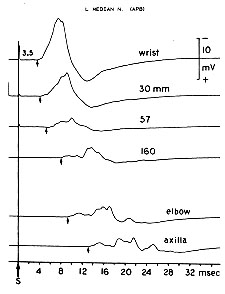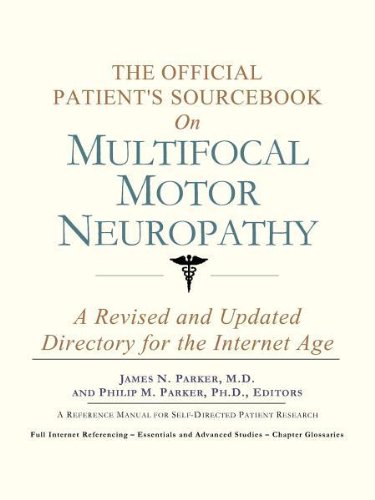Multifocal motor neuropathy (MMN) is a progressively worsening condition where muscles in the extremities gradually weaken. The disorder, a pure motor neuropathy syndrome, is sometimes mistaken for amyotrophic lateral sclerosis (ALS) because of the similarity in the clinical picture, especially if muscle fasciculations are present. Unlike ALS, MMN is usually asymmetric. MMN is thought to be autoimmune. It was first described in the mid-1980s.
Unlike ALS which affects both upper and lower motor nerves, MMN involves only lower motor nerves. Nevertheless, definitive diagnosis is often difficult, and many MMN patients labor for months or years under an ALS diagnosis before finally getting a determination of MMN.
MMN usually involves very little pain however muscle cramps, spasms and twitches can often cause much pain for some sufferers. MMN is rarely fatal, but can lead to significant disability, with loss of function in hands affecting ability to work and perform everyday tasks, and "foot drop" leading to inability to stand and walk; many patients end up using aids like canes, splints and walkers.
Symptoms
Usually beginning in one or both hands, MMN is characterized by weakness, muscle atrophy, cramping, and often profuse fasciculations (muscle twitching). The symptoms are progressive, often in a stepwise fashion, but unlike ALS are often treatable.
Sensory nerves are usually unaffected.
Wrist drop and foot drop (leading to difficulty walking) are common symptoms. Other effects can include gradual loss of finger extension, leading to a clawlike appearance. Cold & hot temperatures exacerbates MMN symptoms to such an extent, unlike other neuropathies, that it is being investigated as a diagnostic tool.
Treatment
Although no treatment is required in some cases, multifocal motor neuropathy is normally treated by receiving intravenous immunoglobulin (IVIG) or immunosuppressive therapy with cyclophosphamide or rituximab. Steroid treatment (prednisone) and plasmapheresis are no longer considered to be useful treatments; prednisone can exacerbate symptoms. IVIg is the primary treatment, with about 80% of patients responding, usually requiring regular infusions at intervals of 1 week to several months. Other treatments are considered in case of lack of response to IVIg, or sometimes because of the high cost of immunoglobulin. Subcutaneous immunoglobulin is under study as a less invasive, more-convenient alternative to IV delivery.
References

External links
- History and overview of MMN from a Mayo Clinic neurologist
- Overview of MMN at National Institute of Neurological Disorders and Stroke
- Overview of MMN at Neuromuscular
- Neuropathy Association; Ask the Doctor†Column: Multifocal Motor Neuropathy
- GBS/CIDP Foundation International
